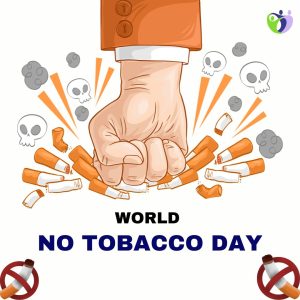
Every year on World Tobacco Day, we are reminded of the devastating impact of tobacco on global health. Yet, behind the well-documented health risks lies a darker narrative that often goes untold. The tobacco industry, in its relentless pursuit of profit, employs subtle strategies to hook the younger generation on its deadly products. Even more disturbingly, this same industry is complicit in perpetuating the exploitation of child labor across its supply chains.
According to the American Thoracic Society, the leading cause of preventable death and disease in the USA is due to tobacco product use. Additionally, close to 90 percent of people who use tobacco recreationally start before the age of 18. The tobacco industry uses marketing schemes that target a younger population and products such as vape pens, e-cigarettes and flavored nicotine product sales are continually on the rise. Meanwhile, tobacco farms around the globe capitalize on child labor and happen to be one of the most hazardous areas of work that should be prohibited by law. These starkly contrasting images are two sides of the same coin, reflecting the pervasive reach and unethical practices of the tobacco industry.
Statistics of Child Labor in the Tobacco Industry:
Global Child Labor in Tobacco Production: According to the International Labour Organization (ILO), there are an estimated 1.3 million children involved in tobacco farming worldwide, with many of them working under hazardous conditions.
Health Risks: Children working in tobacco fields are exposed to nicotine poisoning, commonly referred to as Green Tobacco Sickness. Studies have shown that children can absorb nicotine equivalent to smoking 50 cigarettes simply by handling wet tobacco leaves.
Regional Data: In Malawi, one of the world’s largest tobacco-producing countries, it is estimated that over 78,000 children are engaged in tobacco farming. Similarly, in Indonesia, a Human Rights Watch report found that thousands of children, some as young as eight, work on tobacco farms.
Economic Impact: The U.S. Department of Labor reports that child labor in tobacco farming is prevalent in countries like Brazil, Argentina, India, Indonesia, Malawi, and Zimbabwe, all of which are major tobacco producers for the global market.
Education and Development: The ILO estimates that child laborers in the tobacco industry often miss school and suffer from stunted educational and social development. This perpetuates a cycle of poverty and labor exploitation.
Corporate Responsibility: Despite pledges by major tobacco companies to eliminate child labor in their supply chains, reports and investigations continue to reveal significant gaps in enforcement and accountability.
Conclusion:
As we reflect on the harsh realities of the tobacco industry on World Tobacco Day, it becomes clear that the fight against tobacco extends far beyond the individual health impacts. The deliberate targeting of younger populations and the persuasive exploitation of child labor are obvious injustices that demand our collective attention and action.
While the statistics expose a grim picture, they also serve as a powerful call to action. Governments, non-profit organizations, and individuals all have crucial roles to play. Stricter regulations on tobacco marketing, powerful enforcement of labor laws, and greater support for education and awareness programs are essential steps in curbing these unethical practices.
As a consumer, you have a voice too. By choosing to support companies with transparent, ethical supply chains and by advocating for corporate accountability, we can push for a future where exploitation is not the norm but a thing of the past. On this World Tobacco Day, let us not only recognize the harm caused by tobacco use but also commit to fighting the dangerous practices that built this industry. Together, we can protect our youth and ensure that every child enjoys the fundamental rights to safety, education, and a childhood free from exploitation.
Sources:
- International Labour Organization (ILO): Source
- World Health Organization (WHO): Source
- American Thoracic Society (ATS): Source
- Global News Article: Tobacco Industry aggressively targeting youth
- NPR news article: 12 year olds can’t buy cigarettes but can work in tobacco fields
- Unfair Tobacco Org. article: Child Labor in Tobacco Growing
